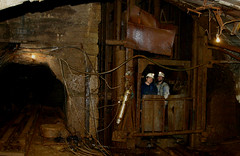Here's a great example someone shared with me, of a real KM failure in the mining industry. (In the text that follows, a "cage" is like the lift or elevator by which miners are lowered into the mine, and a "winder" is the cable and cable drum that lowers the cage. An incident in which the cage "slips", is like being in a lift or elevator, when it slips down the lift shaft. Scary, and potentially very dangerous).
A winder incident occurred in Australia in which the cage slipped in the shaft. The winder was shut down and an investigation started. Company resources in Australia were consulted, but they were on holiday. Experts outside the company in Australia were consulted, but they were also on holiday. There was no backup knowledge support for the mine.
The mine found out at a later date that every mine in Australia who had installed this type of winder had suffered slippage, irrespective of the mine operator or the material being mined. They didn’t know that when their slippage occurred, and consequently they implemented their own investigation.
So we see here, three symptoms of KM failure
- Equipment was installed, without a review of lessons from the use of that equipment elsewhere. so no "learning before doing". Knowledge existed elsewhere, which was not accessed.
- Equipment failed, and there was no way to access internal expertise (company resources were on holiday). Crucial knowledge was not codified, remained tacit, and so was not accessible when needed.
- Equipment failed, and there was no access to previous knowledge. An investigation was implemented, without knowing that the same incident had been investigated already, many times over. Again, a failure to access existing knowledge.





No comments:
Post a Comment